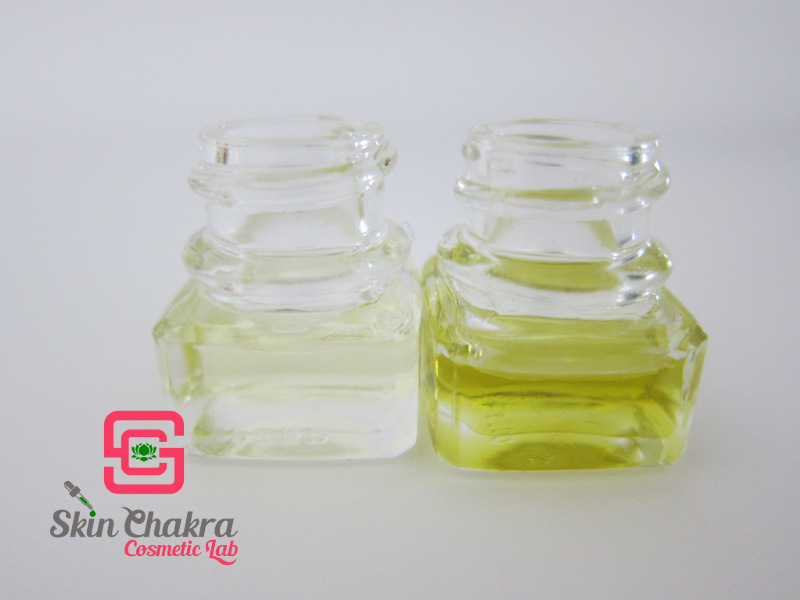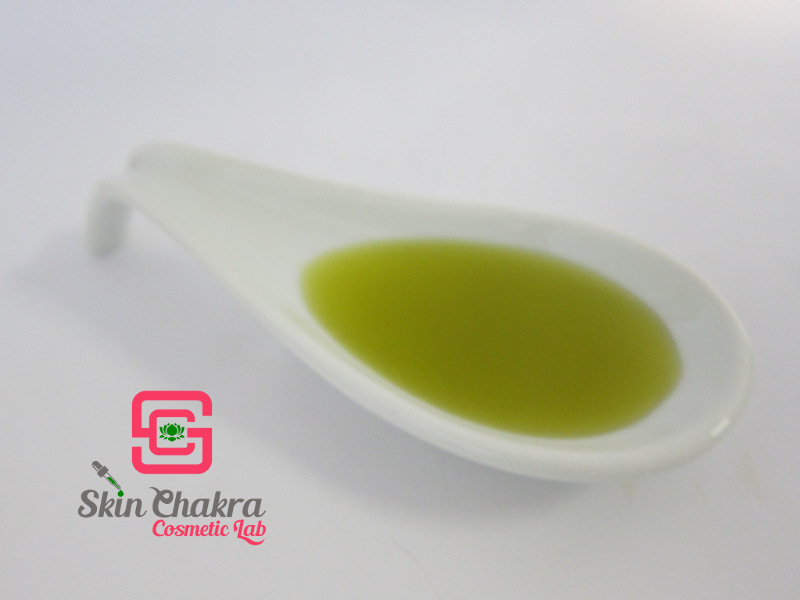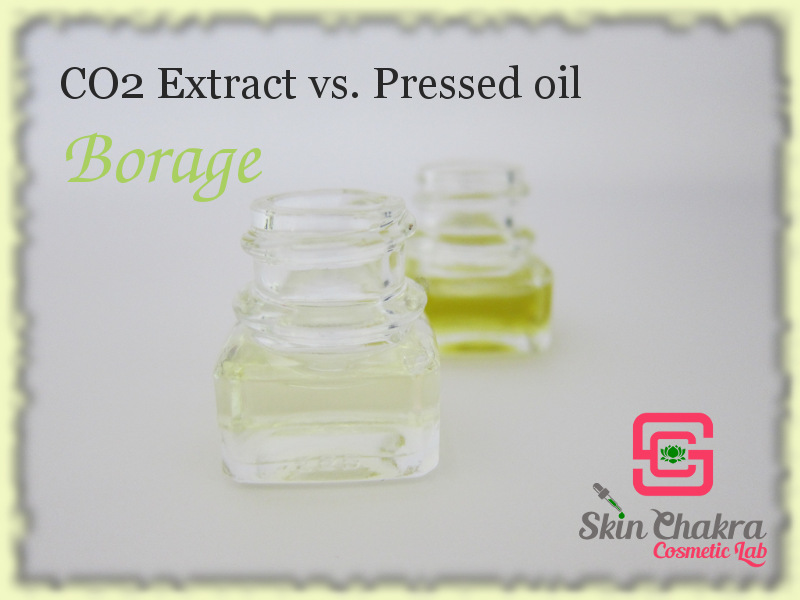CO2 extracts are becoming extremely popular in food, pharmaceutical and cosmetic industry however they are still a big mystery to most formulators (and even to most retailers). In this post, we're going to compare CO2 extract and pressed oil of Borage seed (Borago officinalis), one of the most popular anti-inflammatory oil/active ingredients in skincare.
Read our previous posts about CO2 extracts and their comparision to pressed or essential oils:
Borage oil is one of the most popular anti-inflammatory oils in cosmetic formulations. We don't offer this oil on our online shop because I'm quite frustrated with the shelf-life and stability of the oil. Despite the fact that our oil supllier is one of the most reliable suppliers we could imagine and despite the fact that we receive freshly pressed oils the oil becomes rancid in a few weeks after we've opened the bottle even though the shelf-life is not yet expired (this is the same with pomegranate seed oil).
Anyway, to provide our customers with the benefits of this amazing oil we have sourced organic borage seed CO2 extract which is quite comparable with the pressed oil with the huge difference in shelf-life.
Let's have a look at both:

Both borage oil and CO2 extract are obtained from the seeds. The oil has a much lighter colour (the left bottle) compared to the CO2 extract (at least this is the case in our samples).
(The supplier has added 0.1% organic rosemary extract to Borage CO2 extract to enhance its oxidation stability)
| |
Borag Pressed oil |
Borage CO2 extract |
| CAS# |
225234-12-8 |
84012-16-8 |
| EINECS# |
--- |
281-661-4 |
| INCI name |
Borago officinalis seed oil |
Borago officinalis seed extract |
| Density (20 oC) |
0,921 g/cm3 |
0,915-0,925 |
| Refractive index (20 oC) |
1,4753 |
1,473-1,479 |
| Acid value |
<4,0 mg KOH/g |
5-10 mg KOH/g |
| Sap. value |
190 mg KOH/g |
160-210 |
| Peroxide value |
<10 meq O2/kg |
<15 meq O2/kg |
| Unsaponifiables |
2,06% |
3,4% |
| Fatty acid composition |
|
|
| Palmitic acid (C16:0) |
10,3% |
11,2% |
| Stearic acid (C18:0) |
5,3% |
5,2% |
| Oleic acid (C18:1) |
19,5% |
20,2% |
| Gadoleic acid (C20:1) |
4,1% |
4,2% |
| Linoleic acid (C18:2) |
36,5% |
37,6% |
| Gamma-Linolenic acid (C18:3) |
18,5% |
20,6% |
| Palmitoleic acid (C16:1) |
trace |
0,14% |
| Vaccenic acid (C18:1) |
trace |
0,46% |
| alpha-Linolenic acid (C18:2) |
trace |
0,2% |
| Arachidic acid |
trace |
0,38% |
| Erucic acid (C22:1) |
trace |
0,12% |
| Nervonic acid (C24:1) |
trace |
0,11% |
| Tocopherols |
825 ppm |
not specified |
| Sterols |
1314 ppm |
not specified |

Hope you find this information useful and helpful. The information are charge related and are based on the data sheet we have received from our suppliers. These contents may vary slightly from charge to charge.
BeHappy and have fun
Update on 28.09.2017
You may have wondered why the pressed oil contains sterols and tocopherols but there are no quantities mentioned for the CO2 extract. I contacted our supplier of CO2 extracts (Flavex GmbH) and they confirmed that the CO2 extract contains almost the same quantities of sterols and tocopherols as the pressed oil. However, since the main customers (mainstream industry) is not interested in their content, these are not alalyzed by the supplier. It is quite a weird logic (to all natural formulators) but this is the way the mainstream industry works. They are more interested in the name on the label than the content




